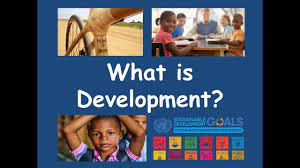
Some Critical Questions
1. What is the real meaning of development?
2. What can be learned from the historical record of economic progress in the now developed world? Are the initial conditions similar or different for contemporary developing countries from what the developed countries faced on the eve of their industrialization?
3. What are economic institutions, and how do they shape problems of underdevelopment and prospects for successful development?
4. How can the extremes between rich and poor be so very great?
5. What are the sources of national and international economic growth? Who benefits from such growth and why? Why do some countries make rapid progress toward development while many others remain poor?
6. Which are the most influential theories of development, and are they compatible? Is underdevelopment an internally (domestically) or externally (internationally) induced phenomenon?
7. What constraints most hold back accelerated growth, depending on local conditions?
8. How can improvements in the role and status of women have an especially beneficial impact on development prospects?
9. What are the causes of extreme poverty, and what policies have been most effective for improving the lives of the poorest of the poor?
10. Is rapid population growth threatening the economic progress of developing nations? Do large families make economic sense in an environment of widespread poverty and financial insecurity?
11. Why is there so much unemployment and underemployment in the developing world, especially in the cities, and why do people continue to migrate to the cities from rural areas even when their chances of finding a conventional job are very slim?
12. Wealthier societies are also healthier ones because they have more resources for improving nutrition and health care. But does better health also help spur successful development?
13. What is the impact of poor public health on the prospects for development, and what is needed to address these problems?
14. Do educational systems in developing countries really promote economic development, or are they simply a mechanism to enable certain select groups or classes of people to maintain positions of wealth, power, and influence?
15. As more than half the people in developing countries still reside in rural areas, how can agricultural and rural development best be promoted?
Are higher agricultural prices sufficient to stimulate food production, or are rural institutional changes (land redistribution, roads, transport, education, credit, etc.) also needed?
16. What do we mean by “environmentally sustainable development”? Are there serious economic costs of pursuing sustainable development as opposed to simple output growth, and who bears the major responsibility for global environmental damage—the rich North or the poor South?
17. Are free markets and economic privatization the answer to development problems, or do governments in developing countries still have major roles to play in their economies?
18. Why do so many developing countries select such poor development policies, and what can be done to improve these choices?
19. Is expanded international trade desirable from the point of view of the development of poor nations? Who gains from trade, and how are the advantages distributed among nations?
20. When and under what conditions, if any, should governments in developing countries adopt a policy of foreign-exchange control, raise tariffs, or set quotas on the importation of certain “nonessential” goods in order to promote their own industrialization or to ameliorate chronic balance of payments problems?
What has been the impact of International Monetary Fund “stabilization programs” and World Bank “structural adjustment” lending on the balance of payments and growth prospects of heavily indebted less developed countries?
21. What is meant by globalization, and how is it affecting the developing countries?
22. Should exports of primary products such as agricultural commodities be promoted, or should all developing countries attempt to industrialize by developing their own manufacturing industries as rapidly as possible?
23. How did so many developing nations get into such serious foreign-debt problems, and what are the implications of debt problems for economic development? How do financial crises affect development?
24. What is the impact of foreign economic aid from rich countries? Should developing countries continue to seek such aid, and if so, under what conditions and for what purposes?
Should developed countries continue to offer such aid, and if so, under what conditions and for what purposes?
25. Should multinational corporations be encouraged to invest in the economies of poor nations, and if so, under what conditions? How have the emergence of the “global factory” and the globalization of trade and finance influenced international economic relations?
26. What is the role of financial and fiscal policy in promoting development? Do large military expenditures stimulate or retard economic growth?
27. What is microfinance, and what are its potential and limitations for reducing poverty and spurring grassroots development?





